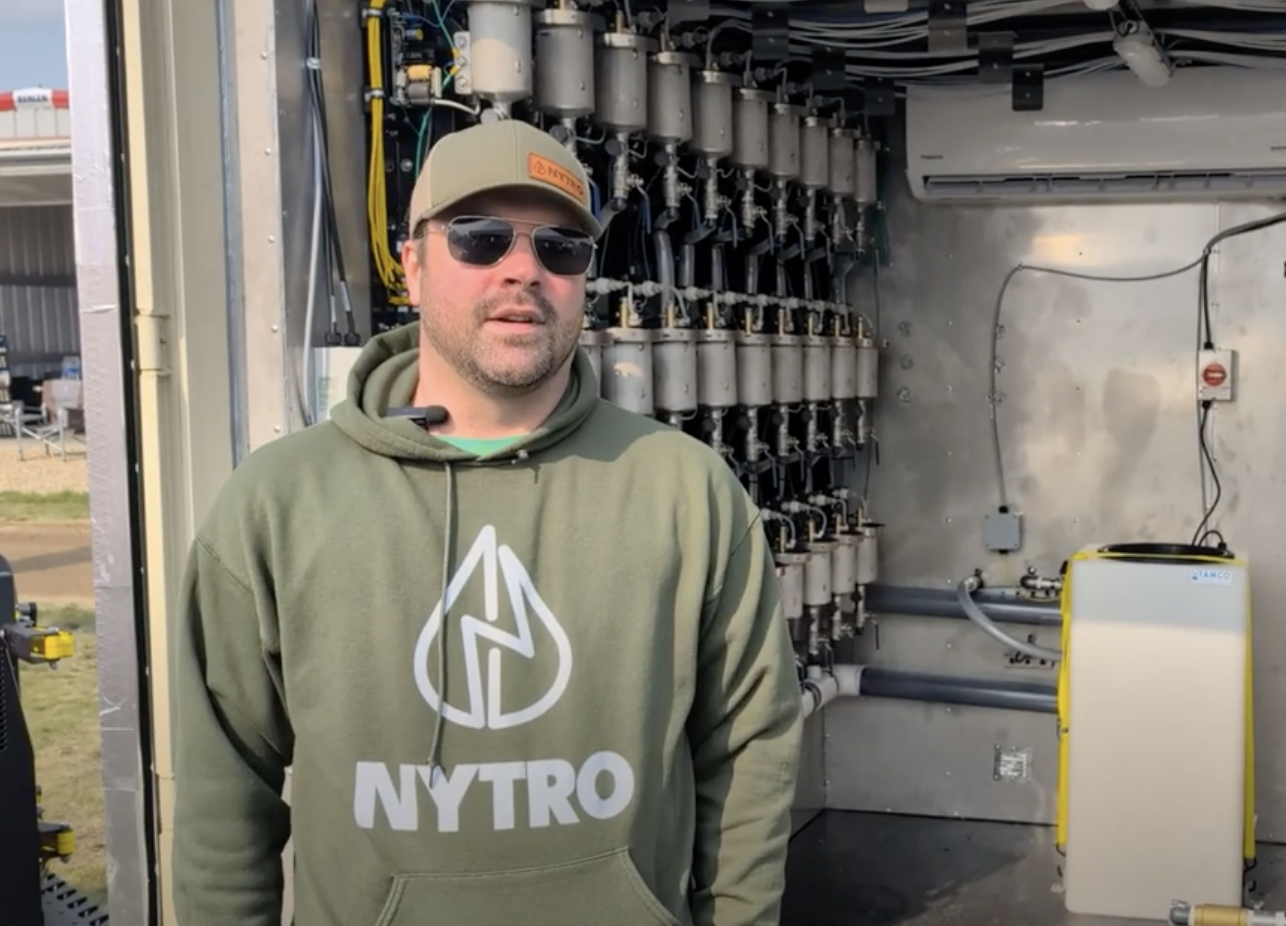Pumping manure lagoons
Experiments conducted by the Prairie Agricultural Machinery Institute have proven straw coverings can almost eliminate odor from a hog manure lagoon. A potential drawback is that straw may plug pumps when the lagoon is being cleaned.
PAMI’s Wayne Stock has worked with producers on Saskatchewan lagoon demonstration projects. He said it is important to sufficiently agitate the lagoon before and during the pump-out. He also said the pump should have chopper blades installed in the impeller system.
“We learned that it is very important to agitate the lagoon adequately prior to pumping and during the entire pumping process. A jet nozzle should be used to mix the slurry and get the solids in suspension. This will help break up the straw clumps. Aiming the nozzle at large straw clumps to break them up will also help prevent plugging at the pump impeller,” Stock said.
Read Also

VIDEO: Green Lightning and Nytro Ag win sustainability innovation award
Nytro Ag Corp and Green Lightning recieved an innovation award at Ag in Motion 2025 for the Green Lightning Nitrogen Machine, which converts atmospheric nitrogen into a plant-usable form.
Doug Sands, who operates Sands Septic in Prince Albert, Sask., has pumped out about 30 straw-covered dairy and hog lagoons. He hasn’t encountered any plugging problems, even with dairy lagoons that tend to have higher concentrations of straw and hay and with others who bed their hogs in straw, as well as use it to cover the lagoon.
Sands said he uses two agitators with six-centimetre (2.5-inch) hoses during pump-out. One agitator shoots slurry through a nozzle aimed at the chopper mounted on the end of the pump. The other agitates and loads the truck. “We agitate and load simultaneously,” Sands said. This eliminates the need to agitate extensively before pumping.
Producers and contractors who need more information about covering lagoons with straw and pumping them out can call PAMI at 1-800-567-7264 and ask for research update number 698.
– PAMI
Cheap test cuts feed cost
WASHINGTON, D.C. (Special) – Scientists and extension workers at Cornell University in Ithaca, New York, have produced a video to show dairy farmers how they can measure feed efficiency with a simple, inexpensive test of the urea nitrogen level in a cow’s milk.
Urea nitrogen is a byproduct when tissue and dietary protein break down in all animals. It is an excellent indicator of the balance between protein and energy in the cow’s diet. If the level is too high, it reduces yields of cheese from milk and may indicate poor reproductive prospects. It also shows the cow is getting more protein in her diet than is good for her, which wastes feed and the farmer’s money.
Other tests for urea nitrogen levels require samples of blood, plasma or serum from cows, which is time consuming and expensive. With the new technology, urea nitrogen can be measured in milk along with fat, protein and somatic cells.
Knowing their herd’s urea nitrogen levels can help dairy farmers reduce feed costs and reduce nitrogen content in run-off from pastures and feedlots. Dairy specialist Charles Elrod said savings of $3,600 (U.S.) annually for a 100-cow herd could be realized by using the test at a cost of about $250 for the herd.
In the video, Arden Nelson, a consulting veterinarian, discusses sampling, analysis and changing the cow’s ration in light of the test results. David Barbano, Cornell professor of food science, explains the yields of milk used for manufacturing dairy products. Elrod discusses the biological, environmental and economic effects of urea nitrogen assessment.
The 34-minute video, called Milk Urea Nitrogen: Analysis, Interpretation and Manipulation is available for $25 (U.S.), including dubbing, shipping and handling from: Cornell University Resource Centre, 7-8 Business and Technology Park, Ithaca, N.Y. 14850; tel. 607-255-2090.














